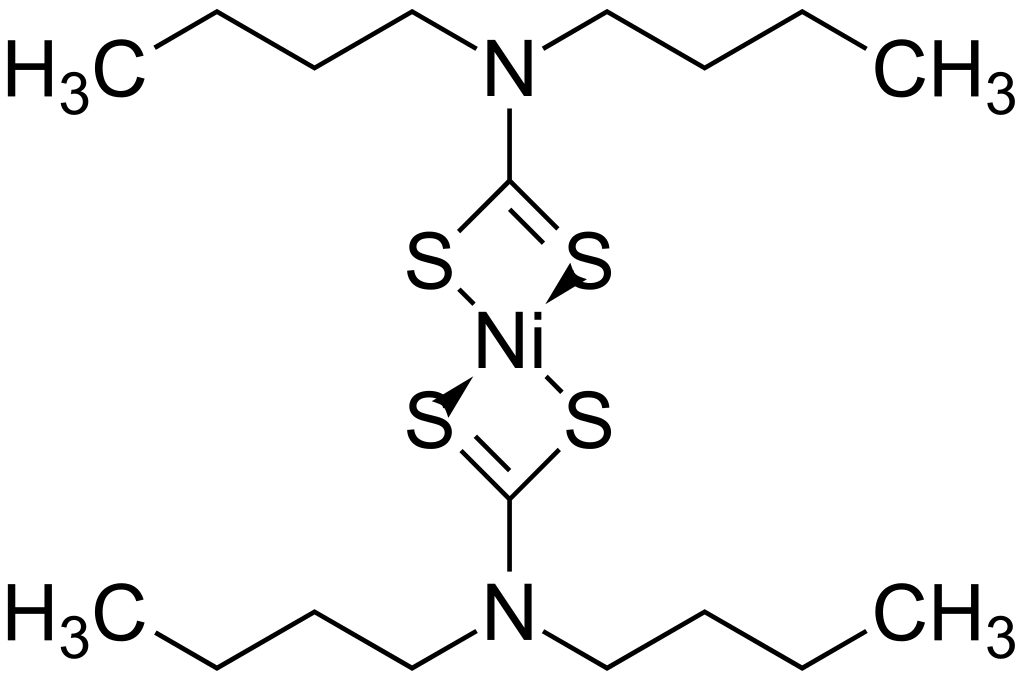Difference Between Homoleptic and Heteroleptic Complexes
The key difference between homoleptic and heteroleptic complexes is that homoleptic complexes have identical ligands attached to a metal centre whereas heteroleptic complexes have at least one different ligand attached to the metal centre of the complex.
The terms homoleptic and heteroleptic complexes come under inorganic chemistry, where we discuss transition metal complexes. These two types of complexes differ from each other according to the nature of the ligands attached to the metal centre.
CONTENTS
1. Overview and Key Difference
2. What are Homoleptic Complexes
3. What are Heteroleptic Complexes
4. Side by Side Comparison – Homoleptic vs Heteroleptic Complexes in Tabular Form
5. Summary
What are Homoleptic Complexes?
Homoleptic complexes are chemical compounds containing identical ligands attached to a metal centre. We encounter this term in inorganic chemistry when discussing transition metal complexes. The prefix “homo-“ refers to “same for all”.

Figure 01: A Homoleptic Complex with Two Similar Ligands attached to the Same Metal Centre
A common example for such a complex is dialkyl magnesium complex which exists in a solution of the Grignard reagent in an ether, having two ether ligands attached to each magnesium centre. Another example of a homoleptic complex is trimethylaluminum in an ether such as THF. This complex contains three methyl groups attached to a central aluminium metal ion with +3 positive charge. Similarly, triaryl or trialkyl borane are homoleptic complexes.
What are Heteroleptic Complexes?
Heteroleptic complexes are chemical compounds containing at least one different ligand attached to the metal centre. Some ligands that are involved in transition metal complex formations such as DMSO are able to bind with two or more different coordination modes. In such a case, we consider the metal complex to be homoleptic, having only one type of ligands with different coordination modes.

Figure 02: A Heteroleptic Complex having Five Similar Ligands and One Different Ligand
A common example of a heteroleptic complex is cobalt(III) complex, with four ammonia ligands and two chloride ligands. The term polynuclear complex, on the other hand, is different from the term heteroleptic complex because polynuclear complexes are transition metal complexes having two or more metal centres with attached ligands. However, it is also a type of heteroleptic complex if the ligands attached to the metal centres are different from each other.
What is the Difference Between Homoleptic and Heteroleptic Complexes?
The terms homoleptic and heteroleptic complexes come under the inorganic chemistry where we discuss transition metal complexes. These two types of complexes differ from each other according to the nature of the ligands attached to the metal centre. The key difference between homoleptic and heteroleptic complexes is that homoleptic complexes have identical ligands attached to a metal centre whereas heteroleptic complexes have at least one different ligand attached to the metal centre of the complex. Moreover, homoleptic complexes are less complex than heteroleptic complexes.
Below is a summary tabulation of the difference between homoleptic and heteroleptic complexes.

Summary – Homoleptic vs Heteroleptic Complexes
The terms homoleptic and heteroleptic complexes come under the inorganic chemistry where we discuss the transition metal complexes. These two types of complexes differ from each other according to the nature of the ligands attached to the metal centre. The key difference between homoleptic and heteroleptic complexes is that homoleptic complexes have identical ligands attached to a metal centre whereas heteroleptic complexes have at least one different ligand attached to the metal centre of the complex.
Reference:
1. “Heteroleptic Complexes.” Coordination Chemistry of Hydroxamic Acids, 14 Dec. 2014, Available here.
2. “Homoleptic.” Wikipedia, Wikimedia Foundation, 7 June 2020, Available here.
Image Courtesy:
1. “Nickel(II) dibutylcarbamodithioate 200” By Emeldir (talk) – Own work (Public Domain) via Commons Wikimedia
2. “RuA5N2” By Smokefoot – Own work (Public Domain) via Commons Wikimedia
ncG1vNJzZmivp6x7pbXFn5yrnZ6YsqOx07CcnqZemLyue8OinZ%2Bdopq7pLGMm5ytr5Wau260zqampZ2gqbakecCnm2aglamys7vLnqetoZNisLC5z6WcsZ2jZA%3D%3D